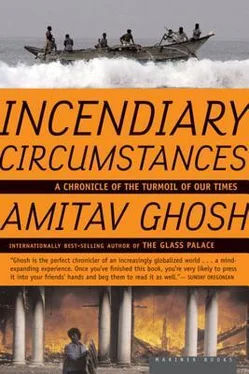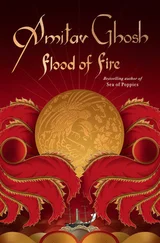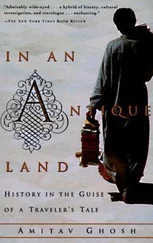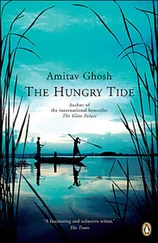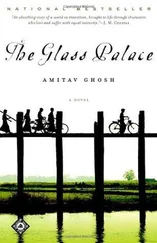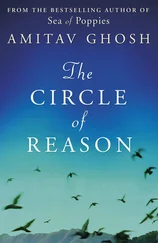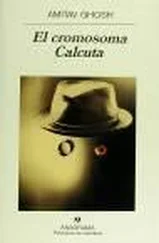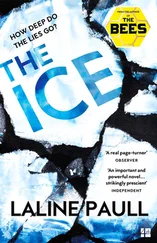The man started in surprise and squeezed himself into the narrow footspace between the seats. Minutes later our bus was intercepted by a group of young men dressed in bright, sharp synthetics. Several had bicycle chains draped around their wrists. They ran along beside the bus as it slowed to a halt. We heard them call out to the driver through the open door, asking if there were any Sikhs on the bus.
The driver shook his head. No, he said there were no Sikhs on the bus.
A few rows ahead of me, the crouching, turbaned figure had gone completely still. Outside, some of the young men were jumping up to look through the windows, asking if there were any Sikhs on the bus. There was no anger in their voices; that was the most chilling thing of all.
No, someone said, and immediately other voices picked up the refrain. Soon all the passengers were shaking their heads and saying, No, no, let us go now, we have to get home.
Eventually the thugs stepped back and waved us through. Nobody said a word as we sped away down Ring Road.
Hari Sen lived in one of New Delhi's recently developed residential colonies. It was called Safdarjang Enclave, and it was neatly and solidly middle-class, a neighborhood of aspirations rather than opulence. Like most such New Delhi suburbs, the area has a mixed population; Sikhs were well represented.
A long street ran from end to end of the neighborhood, like the spine of a comb, with parallel side streets running off it. Hari lived at the end of one of those streets, in a fairly typical big one-story bungalow. The house next door, however, was much grander and uncharacteristically daring in design. An angular structure, it was perched rakishly on stilts. Mr. Bawa, the owner, was an elderly Sikh who had spent a long time abroad, working with various international organizations. For several years he had resided in Southeast Asia; thus the stilts.
Hari lived with his family in a household so large and eccentric that it had come to be known among his friends as Macondo, after Gabriel García Márquez's magical village. On this occasion, however, only his mother and teenage sister were at home. I decided to stay over.
The next morning was very bright. When I stepped out into the sunshine, I came upon a sight that I could never have imagined. In every direction columns of smoke rose slowly into a limpid sky. Sikh houses and businesses were burning. The fires were so carefully targeted that they created an impression quite different from that of a general conflagration: it was like looking upward into the vault of some vast pillared hall.
The columns of smoke increased in number even as I stood outside watching. Some were burning a short distance away. I spoke to a passerby and learned that several nearby Sikh houses had been looted and set on fire that morning. The mob had started at the far end of the colony and was working its way in our direction. Hindus or Muslims who had sheltered or defended Sikhs were also being attacked; their houses were being looted and burned.
It was still and quiet, eerily so. The usual sounds of rush-hour traffic were absent. But every so often we heard a speeding car or motorcycle on the main street. Later we discovered that these mysterious speeding vehicles were instrumental in directing the carnage that was taking place. Protected by certain politicians, "organizers" were zooming around the city, assembling "mobs" and transporting them to Sikh-owned houses and shops.
Apparently the transportation was provided free. A civil rights report published shortly afterward stated that this phase of the violence "began with the arrival of groups of armed young people in tempo vans, motorcycles, scooters or trucks," and went on to say, "With cans of petrol they went around the localities and systematically set fire to Sikh houses, shops and gurdwaras… The targets were primarily young Sikhs. They were dragged out, beaten up and then burnt alive… In all the affected spots, a calculated attempt to terrorize the people was evident in the common tendency among the assailants to burn alive the Sikhs on public roads."
Fire was everywhere; it was the day's motif. Throughout the city, Sikh houses were being looted and set on fire, often with their occupants still inside.
A survivor — a woman who lost her husband and three sons — offered the following account to Veena Das, a Delhi sociologist: "Some people, the neighbors, one of my relatives, said it would be better if we hid in an abandoned house nearby. So my husband took our three sons and hid there. We locked the house from outside, but there was treachery in people's hearts. Someone must have told the crowd. They baited him to come out. Then they poured kerosene on that house. They burnt them alive. When I went there that night, the bodies of my sons were on the loft — huddled together."
Over the next few days, some twenty-five hundred people died in Delhi alone. Thousands more died in other cities. The total death toll will never be known. The dead were overwhelmingly Sikh men. Entire neighborhoods were gutted; tens of thousands of people were left homeless.
Like many other members of my generation, I grew up believing that mass slaughter of the type that followed the partition of India and Pakistan, in 1947, could never happen again. But that morning, in the city of Delhi, the violence had reached the same level of intensity.
As Hari and I stood staring into the smoke-streaked sky, Mrs. Sen, Hari's mother, was thinking of matters closer at hand. She was about fifty, a tall, graceful woman with a gentle, soft-spoken manner. In an understated way, she was also deeply religious, a devout Hindu. When she heard what was happening, she picked up the phone and called Mr. and Mrs. Bawa, the elderly Sikh couple next door, to let them know that they were welcome to come over. She met with an unexpected response: an awkward silence. Mrs. Bawa thought she was joking, and wasn't sure whether to be amused or not.
Toward midday Mrs. Sen received a phone call: the mob was now in the immediate neighborhood, advancing systematically from street to street. Hari decided that it was time to go over and have a talk with the Bawas. I went along.
Mr. Bawa proved to be a small, slight man. Although he was casually dressed, his turban was neatly tied and his beard was carefully combed and bound. He was puzzled by our visit. After a polite greeting, he asked what he could do for us. It fell to Hari to explain.
Mr. Bawa had heard about Indira Gandhi's assassination, of course, and he knew that there had been some trouble. But he could not understand why these "disturbances" should impinge on him or his wife. He had no more sympathy for the Sikh terrorists than we did; his revulsion at the assassination was, if anything, even greater than ours. Not only was his commitment to India and the Indian state absolute, but it was evident from his bearing that he belonged to the country's ruling elite.
How do you explain to someone who has spent a lifetime co-cooned in privilege that a potentially terminal rent has appeared in the wrappings? We found ourselves faltering. Mr. Bawa could not bring himself to believe that a mob might attack him.
By the time we left, it was Mr. Bawa who was mouthing reassurances. He sent us off with jovial pats on our backs. He did not actually say "Buck up," but his manner said it for him.
We were confident that the government would soon act to stop the violence. In India there is a drill associated with civil disturbances; a curfew is declared; paramilitary units are deployed; in extreme cases the army marches to the stricken areas. No city in India is better equipped to perform this drill than New Delhi, with its huge security apparatus. We later learned that in some cities — Calcutta, for example — the state authorities did act promptly to prevent violence. But in New Delhi and in much of northern India, hour followed hour without a response. Every few minutes we tuned to the radio, hoping to hear that the army had been ordered out. All we heard was mournful music and descriptions of Mrs. Gandhi's lying in state, of the comings and goings of dignitaries, foreign and national. The bulletins could have been messages from another planet.
Читать дальше
